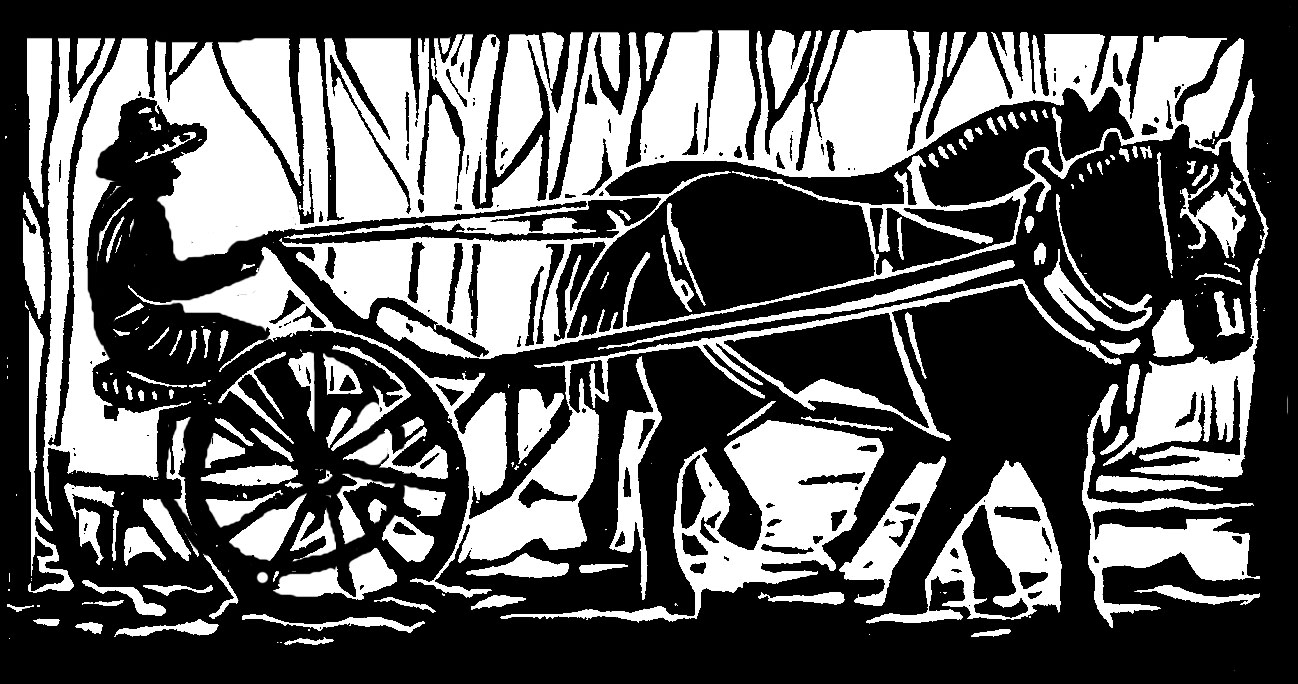Sometimes when we talk about the learning curve in haying with horses, we like to actually show it: our literal learning curve.
There are two curves, to be precise, one on each of the massive posts that frame the doorway of our barn.
“Come on over,” we say, “Here it is! Our learning curve!” We point out the elegant curve that has been carved out each of the posts, just at the height of the floorboards of our haywagon. Yes, indeed, it took more than a few tries to gauge the width of the haywagon, and the width of the barn door, and the width of the swing necessary with the horses from the right, and the width of the swing necessary with the horses from the left.
Of course, given that the haywagon is eight feet eight inches wide, and the doorway is nine feet one inch wide, and that the hay on a loaded wagon sticks out a good foot on either side, there's no wonder we have a literal learning curve. In fact, it is only my fellow farmer, the teamster here, who can take credit for the learning curve, as he both carved it out of the posts, and finally conquered all the widths and swings.
For our part, my farmer-daughter and I, riding on the top of the full wagon, do our best to ensure all will go well while entering the barn by hiding our heads and squeezing our eyes shut, in order to ward off the big thunk. We must be doing our part very nicely, along with the teamster and the horses, because we haven't had a big thunk and an abrupt stop in years.
We all like this very much, including the horses. The horses pull hard up the slight incline to the barn door, and they are not delighted when they come to a thumping halt, nor are they especially fond of the load becoming unexpectedly heavier as the post is being carved by the wagon floorboards.
We've also have had a few instances when it wasn't the floorboards that halted the works, but the hay itself. When the load is both big and unbalanced, the hay tends to gets stuck in the doorway. Then the horses have to hold the load steady while we riders slide down the load and race for the chucks.
We chuck the wagon to take the weight off the horses, and then we chuck off some of the hay, and ask the horses to pull again. They do, willing and strong horses that they are. Once we actually get the wagon into the barn, we unload the hay into the mow, which can be quick and easy, in a clear spot, or long and hard, if we have to stuff the hay up in the rafters. After unloading, there are the two massive posts on the exit door to navigate. Generally this is much easier, and these two posts don't show much learning curve wear.
But we do have a vivid memory of one year, when our big horse Ben was new to the haywagon, and my fellow farmer was giving Ben some practice in making small adjustments to an empty wagon that was just slightly too far to one side as it went out the exit door. This is finer work, not requiring brawn so much as precision. Backing up is already very fiddly work for a horse, and backing up a few steps, going forward at a slight angle, backing up, over and over again, was all just too much for a green horse. At one point, Benny had a complete fit in the harness, not going backwards or forwards, but somehow making his entire body into fits of frustration visible to all.
“Oh, Benny,” we said, sympathizing and laughing at the same time, and we unhitched him then and there, and brought in his wise old auntie Betsey while he had a rest in his stall.
Now wise old Auntie Betsey is buried underneath our apple tree, right across from the barn doors, where she can keep track of things, and Ben has become much older and wiser himself, twelve or more years later.
Whether we can say the same for the farmers is another matter, since here we are, learning curves, head-hiding, eye-closing and all, still crazily making hay.
Originally published in the Monadnock Shopper News, July 31- Aug 6, 2019

